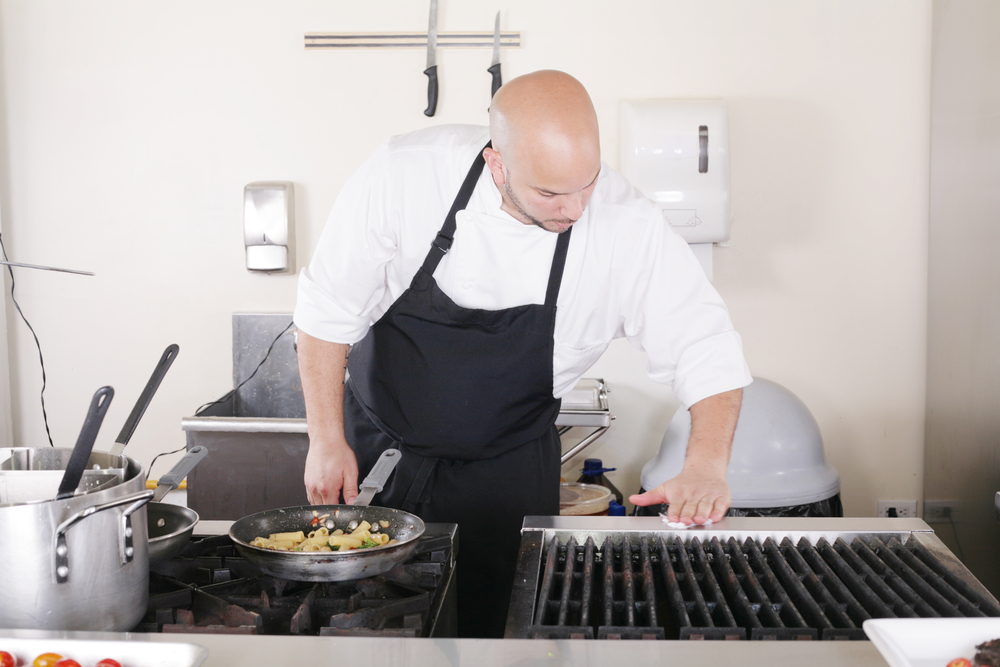5 Expert Tips for Spring-Cleaning Your Restaurant Establishment

Spring cleaning is not just for households. It’s that yearly deep-clean concept that applies to every establishment and goes beyond just dusting the nooks and crannies. In establishments as health and safety oriented as restaurants, this yearly tradition is especially necessary.
So, before you hire a professional cleaning crew or engage your staff in a day-long spring cleaning expedition, know the specific spring cleaning tips that apply to vulnerable and dirt-sensitive environments like eateries.
Degrease & delime
Fryers, grills, and even kitchen hoods all get coated in grease, dirt, and other filth after extensive time spent cooking. And while you’ve likely instructed your kitchen staff to wipe down these areas, there’s nothing like a deep clean to remove the risk of grease fires.
For the kitchen hood, the best thing you can do is steam it. You can use a steam gun to do this, and likely should have one in your keep, but professional cleaning crews are also equipped with these to get the process right.
As for degreasing actual cooking surfaces, the best way is to scrub these down using disinfectant sprays or hot soapy water. This breaks down the grease and leaves cooking surfaces with a nice shine.
It’s critical to delime also. Industrial dishwashing machines will likely need this more than any other fixture in the kitchen. Deliming a commercial dishwasher consists of finding the right cleaner for the job based on the manual or manufacturer’s instructions, draining the tank and re-filling it with fresh water, adding the recommended deliming solution, and running the machine.
Give floors some TLC
If your dining area is carpeted, you probably have your employees vacuum it a few times a day to pick up food crumbs. However, carpet in areas dedicated to consuming food are bound to absorb food-related odors, stains, and so on.
Shampoo and steam clean all carpeted areas in your establishment. You can hire a crew to do this, or you can rent the machine yourself as an affordable alternative.
Tiled areas should receive the same care. Sure, they’re mopped and scrubbed nightly, but take this opportunity to get into the grout. Over time, it absorbs dirt and moisture which causes it to look dirty and scuzzy. A bleach solution can help with this.
Re-organize inventory & shelving units
Filter through your storage to do a mass dump of expired products, ensure that sooner-to-expire products are placed toward the front, and that all items are intuitively organized. Invest in a label maker and label sections of shelving for the goods they represent (i.e. garnishes, spices, flour/sugar, etc.)
Similarly, ensure that you’re organizing shelving units by weight, with lighter items on the top shelf, commonly used items on the middle shelf, and the heaviest items on the lowest shelf.
Order new attire
Throughout the year, you send out your staff’s aprons, chef coats, smocks, and caps to be cleaned. But, once a year, it helps to order a fresh batch of aprons and smocks for front-of-house and back-of-house staff.
This helps make up for ruined stitching, stubborn stains, and other defects that can’t simply be “washed out.” Your staff will appreciate having some freshly pressed attire, and you might even consider taking advantage of this opportunity to invest in some personalized aprons featuring your restaurant’s logo for some extra branding.
Refresh your menu
While you’re at it, why not touch up your menu to represent the fresh start that a spring cleaning often does? Ease diners into the summer season with some new menu items. Seasonal dishes are an especially great way to garner attention and gauge interest.
Even if you’re not interested in adding new items right now, whatever the reason, consider reprinting and reformatting your menu to give it an updated look. Over time, menus collect stains, spills, and odors just like other fixtures in your establishment, so printing a fresh batch will definitely be a nice surprise for new clientele.





